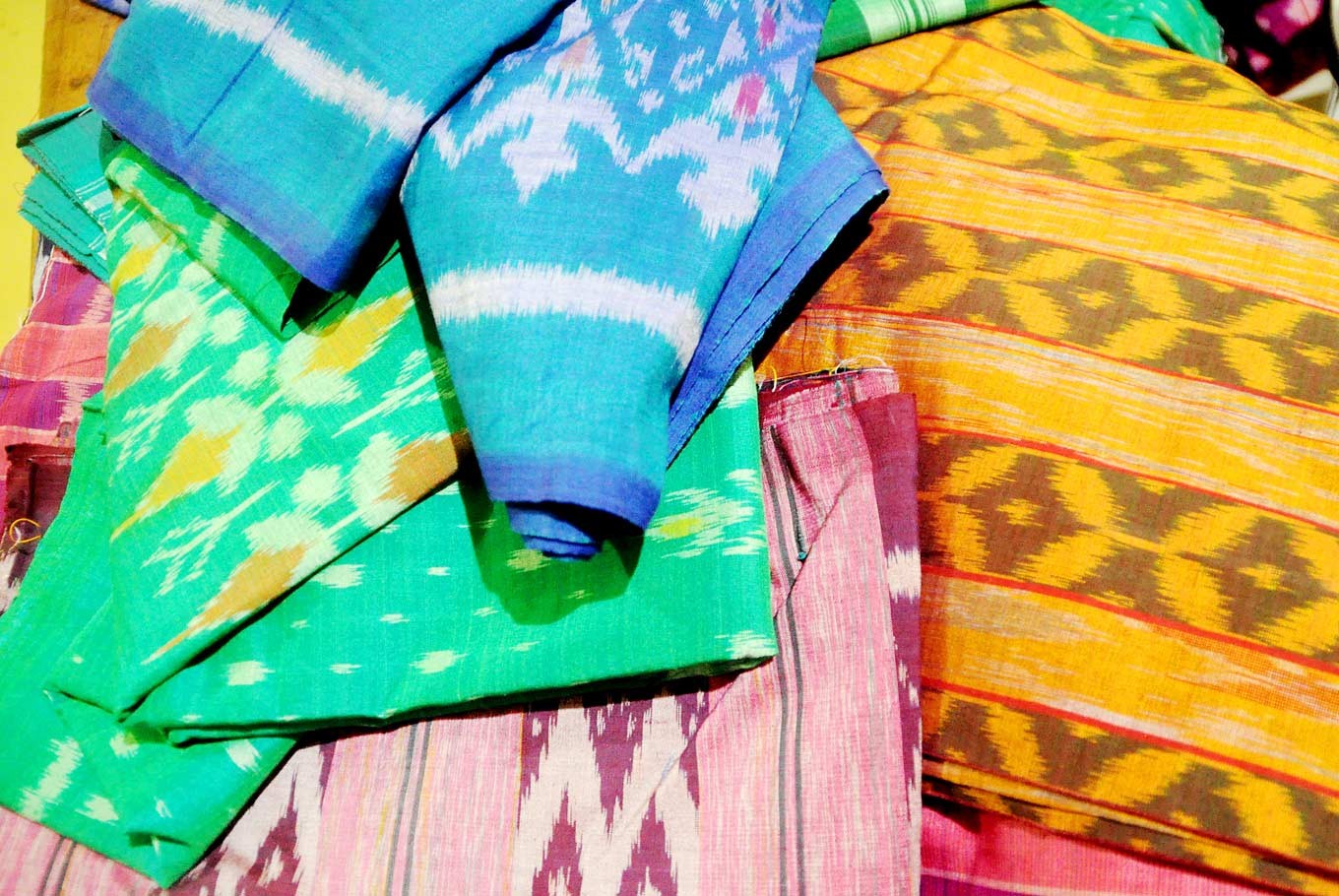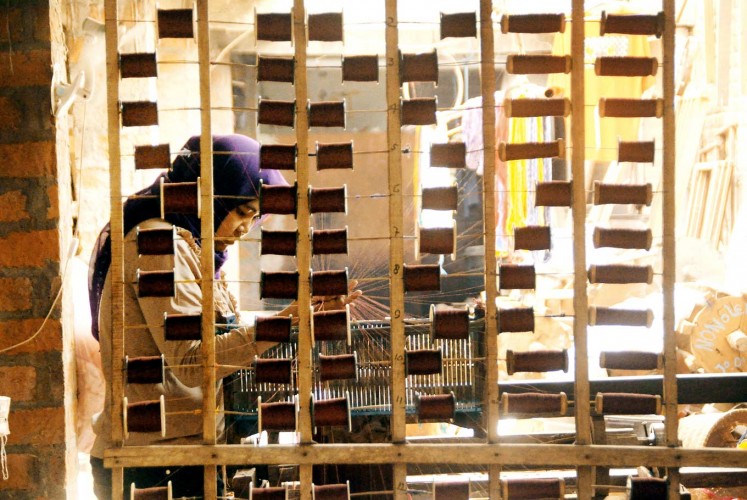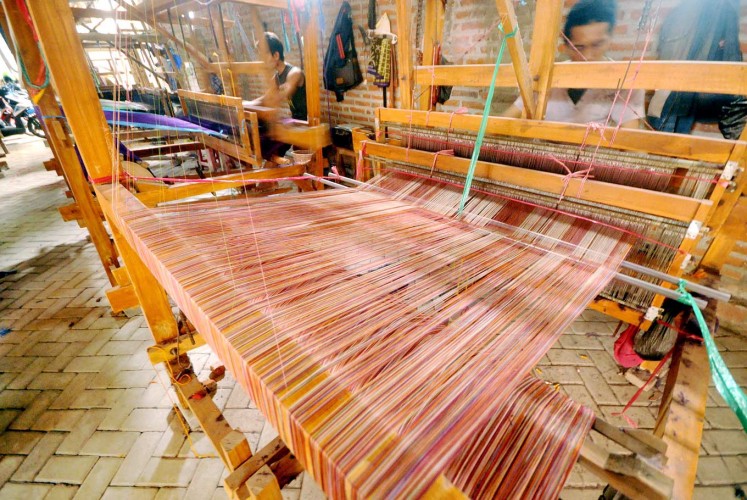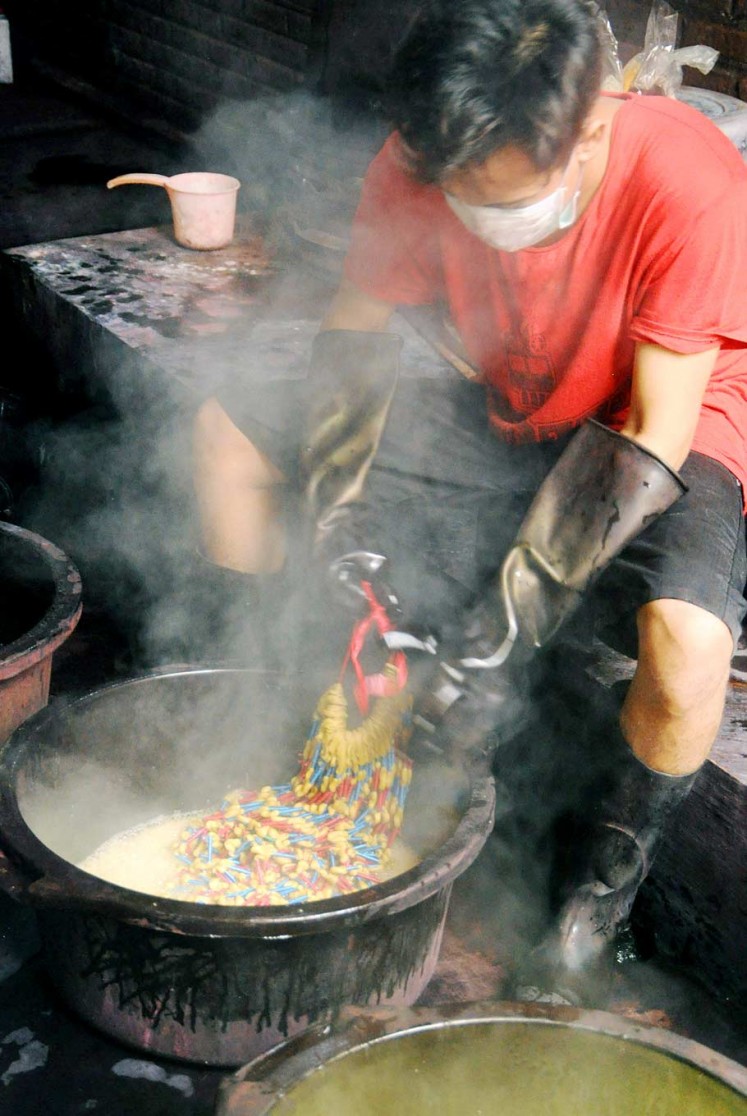Popular Reads
Top Results
Can't find what you're looking for?
View all search resultsPopular Reads
Top Results
Can't find what you're looking for?
View all search resultsPreserving the weaving legacy
Traditional handwoven fabric has been a part of Kediri culture for centuries.
Change text size
Gift Premium Articles
to Anyone
A
s the oldest kingdom in Java, Kediri left behind a legacy of tenun ikat(handwoven fabric), which, today, has spawned home industries, most notably in Bandar Kidul subdistrict.
Physical evidence of the Kediri art form is widely available, including six pieces of tenun ikat from 1910 that are kept at the Tropen Museum in the Netherlands. However, literature on the origins and history of the traditional fabric is harder to find.
Records indicate that a large-scale tenun ikat business was pioneered by an ethnic Chinese citizen named Freddy Jie, who thrived in the 1950s with around 200 manual weaving looms and hundreds of craftspeople. At the time, his business only produced woven sarongs with simple checker motifs.
Political turbulence in 1965 adversely affected Freddy’s business, which was forced to shut down. A policy to import modern weaving machines adopted by the New Order regime further worsened the city’s traditional fabric production, until its gradual revival in the mid-1990s.
Siti Ruqoyah and her husband Munawar, who both live in Bandar Kidul, Kediri, East Java, are among the families that have helped to revive the traditional art form.
The couple, who own the Medali Mas brand, started their business in 1989 with only one manual weaving loom. Today, they operate 60 weaving looms and employ 98 workers.
“Besides hard work, innovations and creations are important elements of the production process,” Siti said.
Do not disturb: A worker rolls thread in a process that requires intense focus in Kediri, East Java. (JP/Nedi Putra AW)Kediri tenun ikat is known for several motifs, such as ceplok (round shapes), salur (straight stripes), shapes resembling Yogyakarta’s lurik (striates) and gunungan (mountain).
“Handwoven cotton with traditional motifs covers about 20 percent of our total production,” she said.
Despite the complex and long process of weaving a piece of woven cloth, sales have run smoothly and they have even had to employ more workers to meet demand.
Their woven products are sold to Jakarta and several regions outside Java.
“They were also introduced to the public at Jakarta Fashion Week some time ago,” Siti said.
The demand for woven sarongs is generally high during the fasting month. Producing at least 60 pieces of silk and non-silk woven fabric daily with a starting price of Rp 165,000 (US$12) per piece, Siti also creates shoes and bags with woven cloth.
Gender equality: Men work with manual weaving looms in Bandar Kidul subdistrict, Kediri, East Java. (JP/Nedi Putra AW)She allows her skillful workers to use her looms for weaving cloth in their respective homes. She tries to share her fortune when demand is high by channeling some of the orders to other woven fabric producers.
This system allows her to exercise quality control over her products. A sheet of woven cloth is crafted through 14 intricate stages, all being handled traditionally.
“One phase of the process affects the outcome of the next, so I’m conducting very tight supervision over employee management and raw material handling,” she said.
The woven fabric business also helps young men get employed, challenging gender expectations in weaving, which many believe is a woman’s job.
Siti, a mother of two who was a migrant worker before she began hand weaving, said she wanted to see younger generations preserve the Kediri tradition.
Time to dye: A worker engaged in the dyeing process produces a piece of tie-dye woven cloth. (JP/Nedi Putra AW)Despite strong sales, she noted there were constraints in the industry, including limited land to accommodate larger operations and the fact that the regional administration had never organized overseas exhibitions.
“So far, foreign marketing of our woven products has only been done through purchases by foreign tourists as gifts and consignment of the products to foreign expos,” she said.
Kediri Mayor Abdullah Abu Bakar said there was a foreign market for woven sarongs, particularly in the Middle East.
“Foreign consumers indeed like exclusive handmade products very much, but there’s some reluctance if they’re still in cloth form as the tailoring costs are high,” he said, adding that he has been attempting to train local artisans to make ready-to-wear woven products.
If demand soars moving forward, land would be provided, he pledged.














